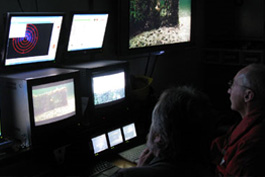 |
|
| SEARCH | OST WEBINAR | ||||
|
Ocean Science Technology Webinar  The COSEE-TEK PI has experience producing live activities featuring multiple video/audio feeds and a |
 |
|
| SEARCH | OST WEBINAR | ||||
|
Ocean Science Technology Webinar  The COSEE-TEK PI has experience producing live activities featuring multiple video/audio feeds and a |